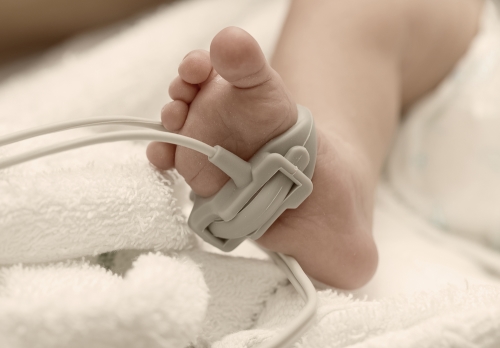 Cephalopelvic disproportion (CPD) is a complication of pregnancy in which
Cephalopelvic disproportion (CPD) is a complication of pregnancy in which
the size of the baby’s head is disproportionate to the size of the
mother’s pelvis – a condition that can result in difficulty
during labor. It is important that CPD be recognized and that health care
professionals understand how to remedy the situation before complications
arise that could injure the baby or mother.
Some of the potential causes of CPD include:
- Increased fetal weight. This can be caused by diabetes, mothers who have
had multiple children, hereditary issues, and babies who have gone beyond
the due date and further than 42 weeks. - Abnormal fetal position including face or brow presentation. Another potential
challenge would be if the baby presents in the occipito-posterior position,
in which the fetus is positioned facing the abdomen rather than the mother’s back. - Cephalopelvic disproportion may be due to a mother’s smaller pelvis
or abnormal pelvic shape. Other pelvis problems can include congenital
deformity of the sacrum or coccyx or congenital hip dislocation. - Genital tract issues, such as tumors, congenital vaginal septum, and cervix
scarring can also lead to CPD.
CPD may be diagnosed when the obstetrician uses pelvimetry or ultrasound
to assess the size of the birth canal or the size of the baby’s
head and body. If it is determined that CPD is present and vaginal delivery
will be difficult, the safest and most effective alternative is for the
obstetrician to perform a cesarean section (C-section).
Proper fetal monitoring is important to determine the potential for issues
such as CPD. Any attempts to deliver the baby naturally when CPD is present
can result in serious trauma to the baby, leading to birth injuries. It
is important for the doctor to make sure they recognize the signs of a
potential complication, because if it is not handled correctly, they could
end up causing harm such as a prolapsed or compressed umbilical cord,
Erb’s palsy, Hypoxic Ischemic Encephalopathy (HIE), cerebral palsy,
and more. Injury to the mother such as uterine rupture or uterine atony
may also occur.
If an obstetrician is negligent in diagnosing CPD or does not take the
proper steps to prevent potential birth injuries, they may be held legally
accountable. Hampton & King has the experience, skill, and tenacity
necessary to give you peace of mind knowing your birth injury case is
in good hands. Our Houston birth injury attorneys are prepared to review
your case and potentially build a case strategy designed to hold the negligent
party responsible for the damages you may have incurred. We are ready
to help you take the legal action you need to receive compensation and justice.
Believe you’re a victim of medical negligence? Call our firm today.




